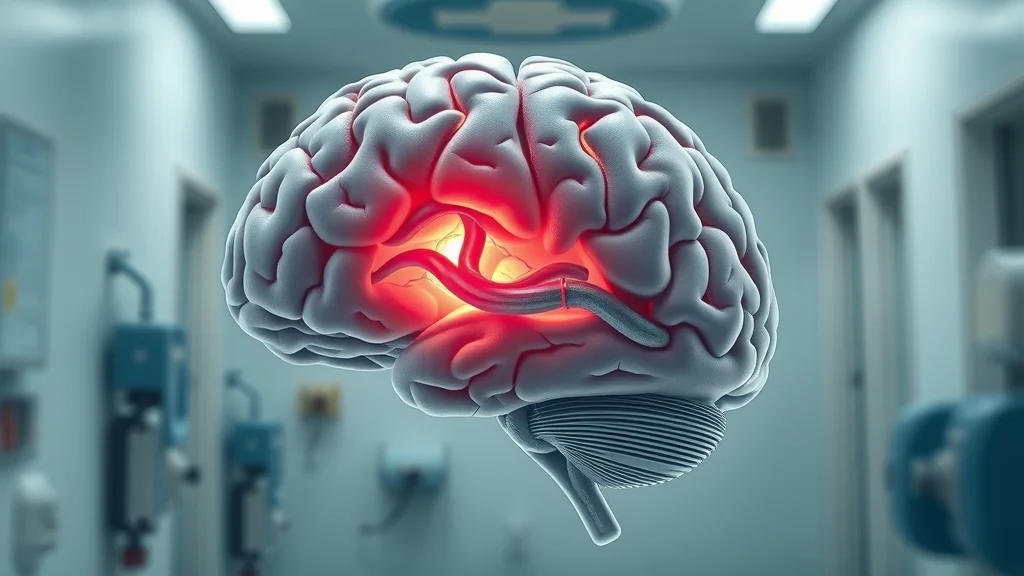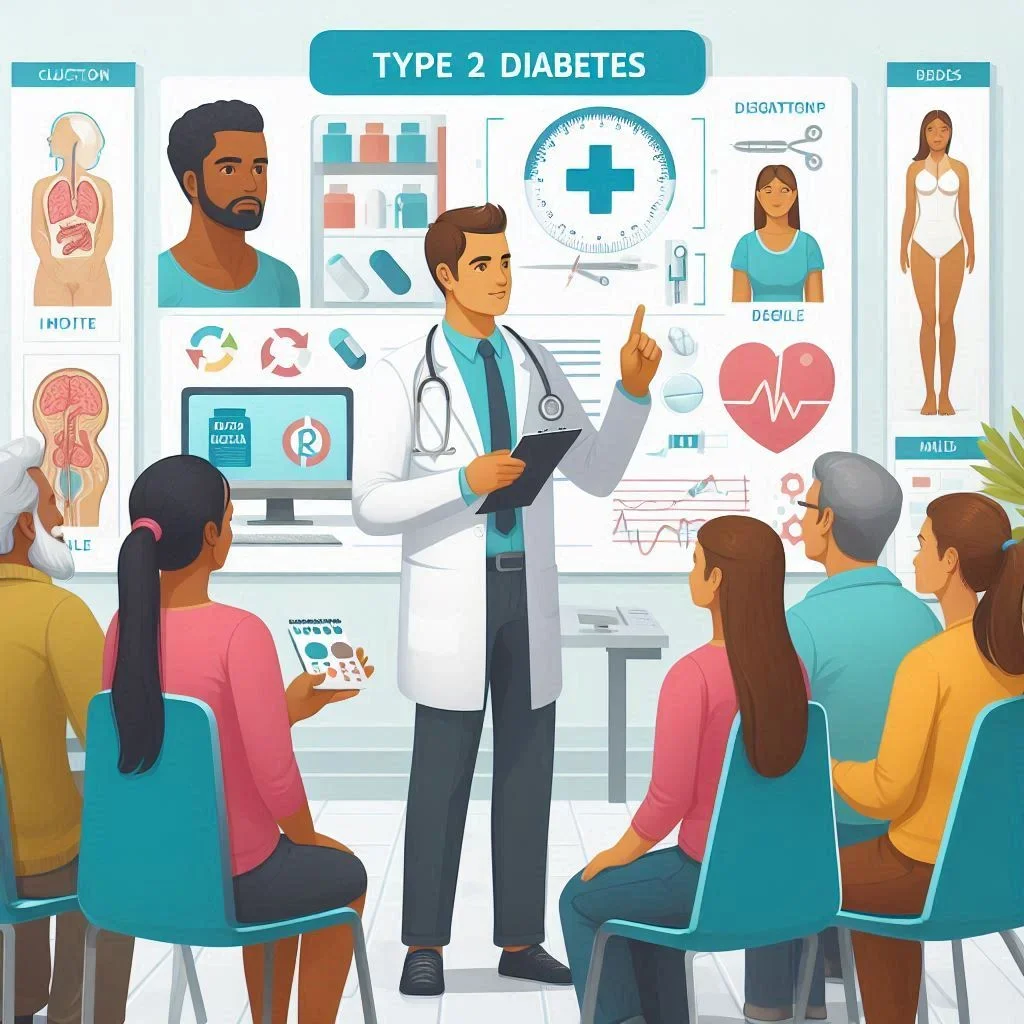Few experiences are as terrifying as facing the worst headache of your life, unaware if it signals a brain aneurysm. This article guides you through understanding symptoms, risks, and urgent steps, empowering you to protect yourself and loved ones when every moment counts.

If you’ve ever felt a sudden, severe headache unlike anything before, you’re not alone in your concern. Every year, thousands of people mistake warning headaches for everyday migraines or tension headaches—yet, in some tragic cases, this pain signals a medical emergency. Understanding the signs and risk factors of a possible brain aneurysm can mean the difference between life, lasting disability, or death. Here’s your essential guide with facts, warning signs, prevention tips, and clear answers to the most pressing questions about brain aneurysms.
Understanding a Brain Aneurysm: Definition and Basics
A brain aneurysm—also medically referred to as a cerebral aneurysm—is a weak or thin spot in a blood vessel in the brain that balloons out and fills with blood. This bulging area in the brain’s blood vessels makes the vessel wall thinner and weaker, increasing the chance it could rupture and allow blood to leak into surrounding brain tissue. While many aneurysms never cause symptoms, a rupture is a true medical emergency, often resulting in a sudden, severe headache sometimes called a thunderclap headache.
“When these aneurysms occur... people get a catastrophic headache. It's like a bomb going off in the head. And, in fact, about 15 percent of people drop dead when the aneurysm bursts.” — Dr. Henry Marsh, Neurosurgeon
Understanding what a brain aneurysm is, how it compares to a cerebral aneurysm, and its common types provides clarity on why this condition is so serious. Addressing these basics first is critical—especially when early recognition of a potential brain aneurysm could help save a life.
What is a Brain Aneurysm?
A brain aneurysm is a bulge or ballooning area in the wall of an artery supplying blood to the brain. This weakness in the blood vessel wall can grow over time. Most often, brain aneurysms develop where blood vessels branch off and are under constant pressure from blood flow. When the vessel wall thins out, it can't withstand normal blood pressure, and there's a risk the aneurysm will burst. Not all brain aneurysms rupture.
In fact, many remain undetected for years, only found while investigating other problems. But when a rupture occurs, blood spills into the brain tissue—usually leading to a type of stroke known as subarachnoid hemorrhage. This life-threatening event can happen at any age, but tends to occur more frequently in adults and is associated with specific risk factors like high blood pressure, family history, and smoking.

Differences Between Cerebral Aneurysm and Brain Aneurysm
The terms brain aneurysm and cerebral aneurysm are often used interchangeably by medical professionals and patients alike. Both refer to aneurysms occurring within the brain's blood vessels. The only difference is semantic: "cerebral" refers specifically to the cerebrum, the largest part of the brain, while "brain aneurysm" is the more general term used by the public. In practice, both describe the same life-threatening vascular problem requiring immediate attention if a rupture is suspected. It's crucial to recognize that aneurysms can occur in different blood vessels within the brain, which may alter the type, risk, and treatment options available.
Common Types of Cerebral Aneurysms
There are several types of cerebral aneurysms, each defined by its shape and location. The most common type is the berry (saccular) aneurysm, which looks like a round berry and accounts for the majority of brain aneurysms. Fusiform aneurysms are less common and involve the widening of a blood vessel rather than a balloon-like bulge.
Dissecting aneurysms develop when a tear in the vessel wall allows blood to enter the layers of the artery. Each type carries a different risk factor for rupture, and the management may differ. Regardless of type, the potential for a ruptured brain aneurysm exists if the vessel wall is significantly weakened and exposed to high blood pressure or other stressors.
While understanding the warning signs and risk factors of brain aneurysms is crucial, it's equally important to recognize that other serious health conditions—such as certain tumors—can also present with subtle or overlapping symptoms. For a deeper look at how symptoms and risks manifest in another organ system, explore this comprehensive guide on bladder tumors, their symptoms, and treatment options.
What You'll Learn About Brain Aneurysms
Key facts and myths about brain aneurysms
Identifying critical symptoms and understanding risk factors
Steps to take if you suspect a ruptured brain aneurysm
Available diagnostic and treatment options
Identifying the "Worst Headache of Your Life": When to Suspect a Ruptured Brain Aneurysm
The phrase "worst headache of your life" is often used by doctors to describe the hallmark warning sign of a ruptured brain aneurysm, a critical symptom indicating possible aneurysm rupture. This thunderclap headache strikes suddenly, often without warning, and peaks in intensity within seconds. But it's not the only symptom—others can help patients and families recognize an emergency and seek immediate help. Early recognition of symptoms can save brain tissue and prevent severe disability or death. This section outlines what to watch for and how brain aneurysm symptoms differ from those of migraines or tension headaches.
Classic Symptoms of a Ruptured Brain Aneurysm
The onset of a ruptured brain aneurysm almost always brings a sudden, severe headache that patients often call “the worst headache of my life.” This headache is so intense it can bring people to their knees and is frequently accompanied by nausea or vomiting, confusion, or even loss of consciousness. Some people experience sensitivity to light, stiff neck, or new neurological problems such as muscle weakness, problems speaking, or seizures. The classic symptom—a thunderclap headache—should never be ignored or “waited out,” as rapid action is necessary to protect brain tissue and blood flow.

Thunderclap headache, nausea, loss of consciousness
Neck pain, visual disturbances, and seizures
Other Warning Signs of Brain Aneurysms
Not all brain aneurysms announce themselves with dramatic symptoms before rupture. Other warning signs might be subtle and include vision changes, drooping eyelid, dilated pupil, or pain above or behind the eye. Some people report double vision, facial numbness, or stiff neck. These symptoms happen when the aneurysm presses on nearby brain tissue or nerves, sometimes long before a rupture.
Recognizing less obvious warning signs means knowing your body and seeking medical evaluation if changes occur suddenly and don’t improve. With many risk factors—such as family history, high blood pressure, and smoking—being common, identifying even mild symptoms may allow timely diagnosis of a potentially life-threatening condition.
Key Risk Factors for Brain Aneurysms and Cerebral Aneurysms
Understanding your personal risk factors for developing a brain aneurysm or cerebral aneurysm can empower you to make better lifestyle choices and seek timely screening. Some risk factors are genetic, while others arise from lifestyle habits or underlying health issues. The more factors you have, the higher your risk of developing aneurysms—or facing an aneurysm rupture. Proactive awareness is the first step to reducing your risk and potentially preventing a life-threatening event.
Understanding Risk Factors: Genetic and Lifestyle
Several key risk factors significantly increase the likelihood of developing brain aneurysms or cerebral aneurysms. A family history of aneurysms is one of the strongest genetic indicators. Lifestyle factors such as smoking, excessive alcohol use, and chronic uncontrolled high blood pressure can weaken blood vessel walls and cause repeated stress, promoting aneurysm development and growth.
Certain other conditions—like polycystic kidney disease and connective tissue disorders—can also make vessels more prone to forming aneurysms. Age and gender play a role, as brain aneurysms are more common in adults and occur more frequently in women. Recognizing and managing these risk factors, especially blood pressure, is vital to lowering your long-term risk.

Family history, hypertension, smoking and alcohol use
Age, gender, and certain medical conditions
Identify Your Personal Risk: Self-Assessment Checklist
Assessing your own risk for brain aneurysms starts by considering both your family medical history and lifestyle factors. Do you have close relatives who’ve suffered from aneurysm rupture, subarachnoid hemorrhage, or sudden, unexplained death? Are you a smoker, or do you have high blood pressure that’s only partly controlled?
Have you been diagnosed with chronic diseases that affect blood vessels? By answering questions related to these risk factors, you gain a clearer picture of whether you should seek medical evaluation or lifestyle changes to reduce your risk of a cerebral aneurysm or rupture. Regular check-ups and honest communication with your healthcare provider are crucial steps.
Unruptured Brain Aneurysms: Recognizing Subtle Symptoms
Most unruptured brain aneurysms remain undetected until found during imaging performed for unrelated symptoms. Still, a minority of unruptured aneurysms produce symptoms by pressing on nearby brain tissue or nerves. Recognizing subtle changes—such as headaches, vision problems, or numbness—can lead to early diagnosis and proactive management. Early treatment significantly reduces the risk of rupture, making awareness and vigilance extremely important.
Symptoms of an Unruptured Brain Aneurysm
Unruptured brain aneurysms rarely produce warning headache or thunderclap symptoms. Instead, individuals may notice persistent mild headaches, blurry or double vision, pain above or behind one eye, or slight changes in speech or coordination. Sometimes cranial nerve palsies—such as drooping eyelids or a change in facial sensation—occur if the aneurysm presses on a cranial nerve.
Even small aneurysms can provoke subtle symptoms, especially when located near sensitive brain tissue. Early medical investigation is crucial, as prompt diagnosis of an unruptured aneurysm allows for intervention before rupture, preventing major complications.

Headaches, visual changes, and cranial nerve palsies
Why Early Detection of Unruptured Brain Aneurysms Matters
Detecting an unruptured brain aneurysm before any bleeding occurs can be lifesaving. This is especially true in people with high-risk factors, such as family history or known vascular diseases. When discovered early, healthcare providers can monitor the aneurysm’s size and shape or recommend preventive treatment options.
Early detection allows for surveillance, potential elective surgery, or lifestyle changes that reduce the risk of rupture. Since rupture can lead to brain damage or death, proactive detection and intervention are crucial strategies for protecting long-term quality of life.
Consequences of an Aneurysm Rupture: Outcomes and Prognosis
A ruptured brain aneurysm can have devastating effects in both the short-term and long-term. When a brain aneurysm ruptures, blood leaks into the brain tissue, causing a subarachnoid hemorrhage. Prompt medical attention is essential, but despite the best care, survivors often face extensive recovery and lasting disability. Knowing the prognosis and potential complications helps families make informed decisions quickly in a crisis.
Short-Term and Long-Term Effects of a Ruptured Brain Aneurysm
Immediately after a rupture, many patients lose consciousness or suffer a sharp decline in function. Survivors of initial bleeding must contend with deficits caused by loss of blood flow to brain tissue. Early effects can include stroke, hydrocephalus (fluid on the brain), vasospasm (narrowing of blood vessels), seizures, and elevated risk of another aneurysm rupture.
Even after stabilization, patients face significant long-term challenges such as memory problems, trouble with movement, speech difficulties, and emotional or behavioral changes. Survival and recovery depend on how quickly treatment is received, the location and size of the aneurysm, age, and general health before the rupture.

Survival Rates for Brain Aneurysm Rupture
Not all individuals survive a ruptured brain aneurysm, but rapid diagnosis and treatment greatly improve outcomes and survival rates. Approximately one-third of people with a ruptured brain aneurysm die before reaching the hospital. Another third survive with moderate to severe disability, while the final third may fully recover with prompt and skilled care. Factors like age, location of the aneurysm, and how quickly treatment is received can influence survival and prognosis. New treatments and advanced surgical techniques continue to improve these odds.
Outcomes after Brain Aneurysm Rupture: Survival and Disability Statistics
Outcome |
Percentage of Patients |
|---|---|
Death before reaching hospital |
~30-40% |
Survive with moderate/severe disability |
~30-35% |
Full recovery or minor disability |
~25-30% |
Diagnosing a Brain Aneurysm: What to Expect
When brain aneurysm symptoms, such as sudden severe headache or vision changes, are present, immediate medical evaluation is required. Accurate and timely diagnosis is essential to improve prognosis and determine the best treatment. Modern imaging and hospital protocols streamline this process, saving critical time in an emergency and ensuring the best possible care and recovery.
Diagnostic Process for Suspected Cerebral Aneurysm
Evaluation for a suspected cerebral aneurysm involves several steps. The first test is often a CT scan to detect blood in the brain. If results are unclear, a lumbar puncture may identify bleeding not seen on imaging. MRI or MRA (magnetic resonance imaging/angiography) offer more detail for subtle aneurysms or smaller bleeds.
The definitive test is usually a cerebral angiogram, where contrast dye maps blood vessels and highlights any abnormalities, including aneurysms. Prompt diagnosis through these methods helps doctors choose appropriate treatments and reduces the risk of long-term brain injury or fatal rupture. Immediate assessment and action are critical whenever thunderclap headache or neurological symptoms appear.
CT scan, MRI, lumbar puncture, angiography

The Importance of Immediate Medical Attention for Brain Aneurysm Symptoms
If you or a loved one experiences the sudden onset of the “worst headache ever,” vision loss, drooping face, numbness, or sudden confusion—key symptoms of a ruptured brain aneurysm—call emergency services immediately. Every minute counts. Rapid intervention helps save brain tissue, prevent permanent damage, and drastically improve the chance of survival after a brain aneurysm rupture. Do not wait for symptoms to improve or rely on home remedies with such a critical emergency. If in doubt, seek medical attention as soon as possible.
“An aneurysm is a blowout on one of the arteries not usually in the brain but immediately underneath the brain... If you imagine the inner tube of a bicycle tire—if there's a weak patch, and you blow the tire up hard, that weak patch will start to bulge out like a little blister and then become a balloon. And then, one day, it will burst. And a very similar process happens if people have a weakness in, usually, a branch point of one of the arteries.” — Dr. Henry Marsh, Neurosurgeon
Treatment Options for Brain Aneurysms and Cerebral Aneurysms
Modern medicine offers several options to treat both ruptured and unruptured brain aneurysms. Treatment depends on size, location, symptoms, and individual risk factors. The goal is to prevent rupture if unruptured, or stop bleeding and save as much brain function as possible in the event of a rupture. Below are the main procedures and interventions used by neurologists and neurosurgeons today.
Surgical Clipping and Endovascular Coiling
Two main surgical techniques used to treat brain aneurysms and cerebral aneurysms are surgical clipping and endovascular coiling. In surgical clipping, a neurosurgeon places a tiny metal clip at the base of the aneurysm, cutting off blood flow to prevent further expansion or rupture. Endovascular coiling is less invasive and uses a catheter inserted through an artery, guiding platinum coils into the aneurysm sac to induce clotting and block it from circulation.
Both procedures come with risks—bleeding, infection, or stroke—but are life-saving when tailored to the patient's specific condition. The choice of procedure depends on aneurysm size, location, and the patient’s health profile.

How procedures are performed and associated risks
Managing Unruptured Brain Aneurysm: Observation vs. Intervention
For unruptured brain aneurysms, doctors carefully assess several risk factors—including aneurysm size, location, patient age, and medical history—before recommending observation or active intervention. Small aneurysms without symptoms may be safely observed with regular imaging to monitor for growth.
Larger or symptomatic aneurysms usually warrant preventive surgery or endovascular treatment to reduce the risk of rupture. The decision is highly individualized, aiming to balance treatment benefits against procedural risks. Ongoing monitoring and lifestyle adjustments play a vital role in managing overall risk, especially in those with underlying health issues like high blood pressure or genetic predispositions.
Reducing Your Risk: Brain Aneurysm Prevention Strategies
While not all brain aneurysms can be prevented, adopting certain lifestyle habits and working with your doctor to control blood pressure, cholesterol, and other diseases can lower your risk. Proactive choices can make a significant difference, especially for those with a family history or existing aneurysms. Awareness of your own risk factors—genetic and environmental alike—enables prevention strategies that may preserve brain health for years to come.
Lifestyle Changes to Lower Your Risk of Cerebral Aneurysms
Simple, everyday choices can have a lasting impact on your risk of developing brain and cerebral aneurysms. Maintaining a healthy blood pressure is paramount—this single factor greatly reduces the overall risk. Regular physical activity, a balanced diet low in saturated fats, quitting smoking, and avoiding excessive alcohol also strengthen blood vessel walls and bolster vessel integrity.
Routine medical check-ups for cholesterol, diabetes, and heart disease help identify new risk factors early, and long-term control of chronic diseases provides added protection. Remember, knowledge and prevention now may save your life, or a loved one's, in the future.

Controlling blood pressure, quitting smoking, regular check-ups
Medical Monitoring for High-Risk Individuals
People with a strong family history of aneurysms, known vascular diseases, or predisposing genetic conditions should consider periodic brain imaging and regular consultation with a neurologist. Medical professionals may use non-invasive tests—like MRA or CTA—for screening in high-risk groups. Early detection and preventive management reduce both the likelihood and the impact of a potential aneurysm rupture. If you fall into one of these risk groups, proactive communication with your healthcare provider is critical.
Expert on Ruptured Brain Aneurysm Events
Understanding the mechanics of a brain aneurysm rupture—the moment when a blood vessel wall breaks, and blood rushes into the brain—is key to appreciating why this event is so dangerous. This expert animation provides a step-by-step visualization, explaining how blood vessel wall thinning leads to rupture, the cascade of injury to brain tissue, and why immediate emergency response is essential for survival and recovery.
"Timely intervention for a ruptured brain aneurysm can be the difference between life and death." — Leading Neurosurgeon
Latest Innovations in Cerebral Aneurysm Surgical Techniques
Neurosurgeons and researchers have transformed brain aneurysm care with advanced techniques like flow-diverting stents, minimally invasive endovascular coiling, and precision-guided surgical clipping. These technologies reduce procedure times, lower the risk of complications, and expand treatment access for patients previously considered inoperable. Advancements in imaging, monitoring, and post-procedure care continue to improve survival rates and quality of life for those facing cerebral aneurysms and their rupture.
People Also Ask About Brain Aneurysms
Can someone survive a brain aneurysm?
Yes, survival is possible after a brain aneurysm rupture, especially with immediate medical care. While the survival rate depends on the size and location of the aneurysm and how fast treatment is given, about 25% to 30% of patients survive with minimal or no disability. However, it’s important to note that roughly 30% to 40% of cases result in sudden death before reaching the hospital.
Survival After Brain Aneurysm: What the Data Shows
Data indicates that early detection, rapid hospitalization, and modern surgical or endovascular treatment greatly enhance survival odds. Those who receive timely intervention have a far better prognosis compared to those who delay treatment. Factors influencing survival include age, general health, and the extent of bleeding.
What is the life expectancy of a person with a brain aneurysm?
Many people live normal, full lives with an unruptured brain aneurysm, especially if they manage risk factors such as high blood pressure and refrain from smoking. If an aneurysm remains intact and stable in size, routine monitoring and lifestyle adjustments are typically all that’s needed. After rupture and successful treatment, patients may experience varying degrees of disability, but ongoing rehabilitation can maximize recovery.
Prognosis and Follow-up for Brain Aneurysm Patients
For individuals with a treated or monitored aneurysm, regular check-ups and brain imaging help ensure stability and early detection of any changes. Lifestyle modifications and medical guidance are crucial for reducing the risk of a subsequent rupture and prolonging life expectancy.
How to avoid aneurysms in the brain?
You can reduce the risk of developing brain aneurysms by controlling your blood pressure, not smoking, eating a balanced diet, and exercising regularly. Avoiding substance abuse and excessive alcohol also helps maintain healthy blood vessels. If you have a family history of cerebral aneurysm or related conditions, consult your doctor about screening and proactive prevention strategies.
Critical Prevention Tips for Brain Aneurysms
Regular health checks, a heart-healthy lifestyle, and early medical consultations for headaches or neurological changes are the foundation of brain aneurysm prevention. Lowering your risk factors and staying informed can make all the difference.
What are the warning signs of a brain aneurysm?
Key warning signs include a sudden severe headache, neck pain, nausea or vomiting, vision changes, and sudden onset of neurological symptoms such as weakness, difficulty speaking, or confusion. In rare cases, you may notice facial numbness or drooping. If these symptoms appear, seek emergency medical help right away.
Recognizing Warning Signs Early: When to Seek Help
Never ignore a sudden, severe headache or unusual combination of neurological symptoms. Rapid action could save your life, minimize brain tissue loss, and improve chances of full recovery after a brain aneurysm rupture.

Frequently Asked Questions About Brain Aneurysms
Are brain aneurysms hereditary? Yes. They can run in families, especially when two or more close relatives are affected. If in doubt, seek screening advice from your doctor.
Can a brain aneurysm heal itself? Some small aneurysms may remain stable for years without treatment, but true healing without medical intervention is rare. Ongoing monitoring is essential.
What triggers aneurysm rupture? Sudden increases in blood pressure, intense physical exertion, or emotional stress can provoke a rupture in weakened vessels.
What is the difference between aneurysm and stroke? Aneurysm refers to the weakened, bulging blood vessel, while a stroke is the event—often caused by aneurysm rupture—that damages the brain.
Are there screening tests for cerebral aneurysms? Yes. MRI and CT angiography can detect aneurysms, particularly in high-risk individuals or those with neurological symptoms.
Key Takeaways on Brain Aneurysm Awareness
Sudden, severe headache can be a sign of brain aneurysm rupture
Know your risk factors and monitor for symptoms
Seek immediate medical attention for suspicious symptoms
Treatment options exist for both ruptured and unruptured brain aneurysms
Protect Yourself and Loved Ones: Share This Brain Aneurysm Resource
Awareness saves lives. Share this resource with your family, friends, or anyone you know who may be at risk—early action and knowledge can make a world of difference.
Stay vigilant: recognize symptoms, know your risk, and always seek help fast for suspicious headaches or neurological changes.
If you’re committed to making informed choices about your health, consider broadening your understanding of how daily habits and lifestyle factors influence your overall well-being. For instance, many people are surprised to learn that the popular “10,000 steps a day” rule isn’t the only path to better health—there are more flexible, science-backed approaches to staying active and supporting vascular health.
Discover practical strategies and the latest insights in this article on why 10,000 steps a day isn’t essential for health. Taking a holistic view of prevention and wellness can empower you to protect your brain, heart, and body for years to come.
Sources
Centers for Disease Control and Prevention – https://www.cdc.gov/stroke/brain_aneurysm.htm
Mayo Clinic – https://www.mayoclinic.org/diseases-conditions/brain-aneurysm/
Experiencing a sudden, severe headache—often described as the “worst headache of my life”—can be alarming and may indicate a serious condition such as a brain aneurysm. A brain aneurysm is a bulge or ballooning in a blood vessel in the brain, which can rupture and lead to life-threatening complications. Understanding the symptoms, risk factors, and treatment options is crucial for early detection and management.
For comprehensive information on brain aneurysms, including their causes, symptoms, and treatment options, the Mayo Clinic provides an in-depth overview. Their resource covers essential aspects such as the definition of aneurysms, potential complications, and preventive measures. (mayoclinic.org)
Additionally, the National Institute of Neurological Disorders and Stroke offers detailed insights into cerebral aneurysms, discussing types, symptoms, and current research efforts. This resource is valuable for understanding the medical and scientific perspectives on brain aneurysms. (ninds.nih.gov)
If you’re serious about understanding brain aneurysms and their implications, these resources will provide you with authoritative and up-to-date information to guide your knowledge and decision-making. NCWellnessHub.com
 Add Row
Add Row  Add
Add 




Write A Comment